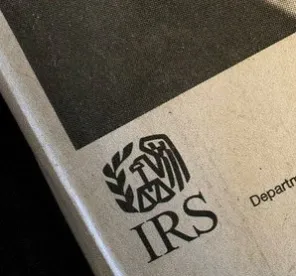On October 8, 2019, the U.S. Department of Treasury and the IRS released the 2019-2020 “Priority Guidance Plan” for the 12-month period running from July 1, 2019, through June 30, 2020. The plan sets out the agencies’ priorities and offers insight into which taxpayers and organizations are at greater risk of an audit, and which aspects of administration will be most heavily scrutinized.
The nine-page plan is organized based on how the agencies intend to investigate potential IRC violations — how they will use filed returns to find potential discrepancies; how they might use questionnaires to determine whom to investigate further; etc.
The following is a simplified list of which retirement plans, tax-exempt organizations, and governmental entities are at risk and what aspects or features are of greater concern. We recommend that you analyze the following aspects of your retirement plan or organization, and work to correct any aspects that are out of compliance.
Which Retirement Plans Are at Risk and Why
-
Employee stock ownership plans (ESOPs) are at greater risk for the IRS scrutinizing:
-
Whether the valuation was proper.
-
Whether annual nondiscrimination requirements are met.
-
Whether the ESOP loan (not participant loans) satisfies applicable requirements.
-
-
403(b) plans are at greater risk for the IRS scrutinizing:
-
Whether 403(b) plans satisfy universal availability (for salary deferrals) and the once-in-always-in rule.
-
Compliance with the contribution limits of IRC § 402(g) (deferrals), 415 (overall contributions), and 414(v) (catch-ups).
-
-
Deferred compensation plans (under IRC 457(b)) are at greater risk for the IRS scrutinizing compliance with the contribution limitations and special three-year catch-up contribution rule.
-
Terminated cash balance plans are at greater risk for the IRS scrutinizing past compliance with benefit restrictions (under IRC 415(b)) and whether the termination triggered a reversion that is/was subject to an excise tax.
Which Tax-Exempt Organizations Are at Risk and Why
-
Hospitals are at risk for being scrutinized about whether they are subject to and/or reported the proper amount of unrelated business taxable income (UBTI), which is reportable on Form 990-T. UBTI is income from products or services that are unrelated to the hospital’s main purpose or function (which is, presumably, the provision of medical care). IRS Publication 598 provides useful guidance to better understand UBTI.
-
While not entirely clear, it seems that tax-exempt organizations’ use of independent contractors might be scrutinized to determine if those contractors should be treated as employees, which would place an income and employment tax withholding obligation on the tax-exempt entity.*
-
The Priority Guidance Plan discusses the intention to focus on compliance with the Affordable Care Act by tax-exempt entities. We believe this means (1) assessing whether exempt organizations with 50 or more full-time and full-time equivalent employees are offering coverage that satisfies affordability and other requirements to a sufficient number of employees, and (2) assessing whether exempt organizations with fewer than 50 full-time employees are properly counting their part-timers to arrive at the “full-time employee equivalent” rate.
Which Governmental Entities Are at Risk and Why
In short, it appears that all governmental entities are at risk for increased scrutiny of their employment tax practices. The IRS has a long history of issuing statements revealing its belief that local governmental entities often fail to properly pay, collect, and remit employment taxes. We believe this is due, in part, to section 218 and related provisions of the Social Security Act, which generally excludes the compensation of local governmental employees from certain employment taxes if retirement benefit accruals satisfy certain minimum requirements, unless the exclusion is overridden. Specifically, the Priority Guidance Plan expresses an intention to:
-
Closely scrutinize Forms W-2 and 1099 to assess proper employment and income tax treatment.
-
Follow up on worker and other claims alleging noncompliance. We suspect this generally refers to situations in which an independent contractor working for a governmental entity blames the governmental entity for its failure to properly pay income or employment taxes on the basis that the contractor should have been an employee and the governmental entity should have been responsible for withholding, remitting, and paying the employer share of employment taxes.*
-
Scrutinize employment tax refund claims filed by governmental entities.
Steps to Take
It is always important to operate in compliance with applicable requirements, or to be prepared to argue that certain requirements do not apply. In addition, we recommend that administrators of the retirement plans described above confirm that their plan complies with the aspects or features noted, or contact its adviser or attorney to assist with this assessment. Hospital organizations should review the instructions to Form 990-T describing UBTI to confirm that the organization is properly accounting for UBTI. Governmental and tax-exempt entities should assess their methods of classifying workers as employees and independent contractors. In addition, tax-exempt organizations should confirm that employee health care practices satisfy applicable Affordable Care Act requirements, while governmental entities reassess employment tax practices, in general.
To the extent you have questions concerning any of the above, or want assistance assessing compliance or bringing your retirement plan or organization into compliance, please contact the author of this article or the Carlton Fields attorney with whom you usually communicate.
*When the IRS investigates whether independent contractors should be reclassified as employees, it interviews the worker, posing questions based on IRS Form SS-8, and particularly Parts II-V of that form. Any employer concerned about its classification of a worker or group of workers as independent contractors should complete this form and send it to us for review.




 />i
/>i

